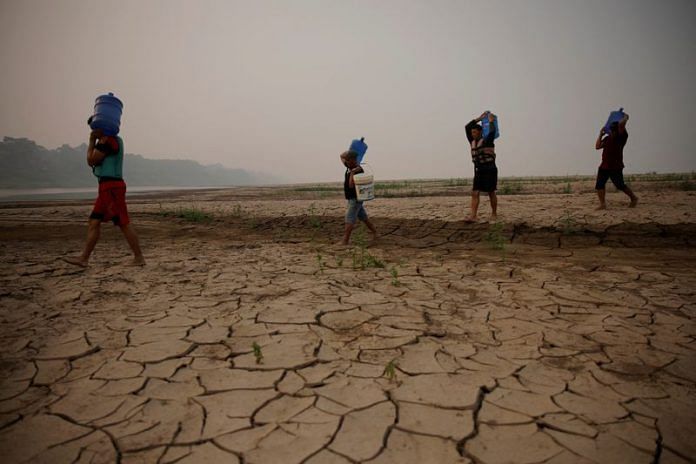By Bruno Kelly
HUMAITA, Brazil (Reuters) – Water levels in the rivers that run through the vast Amazon rainforest have been falling, after a record drought followed by less rain, presenting unprecedented challenges for the Ribeirinhos people living there.
With rivers becoming more difficult to navigate and water too dirty to consume, many of the traditional rural population who live on river banks have been relying on outside supplies of drinking water.
Francisca das Chagas da Silva, a resident, said older people in particular have struggled because they needed to walk much further to get water. “We have to carry it from the riverbanks to our homes,” she said.
The Ribeirinhos usually get water directly from rivers or have connected systems – but these means of supply fail when water levels drop so dramatically.
Now, many residents rely on non-governmental organizations or the state government for drinking water.
Joao Ferreira Mendonca, a community leader, said the river bank was about 800 meters (0.5 miles) away from some homes, a long distance for an older person or one with health problems.
“Now imagine a person in the hot sun, people with high blood pressure, doing this journey,” he said.
The Brazilian Geological Service, SGB, has warned in recent days that all rivers in the Amazon basin were expected to drop below their historical levels.
Ribeirinhos usually live on river banks in pile dwellings – from where they move with motor boats.
Rosicleia Gomes Vieira, another resident, said life in general was becoming much more isolated because the low water levels make navigation more difficult and impossible to carry produce to the city.
Other than the rivers, which have long been the main way of transport for residents, there is only a long dirt road that cuts through the dense rainforest.
In Brazil, where wildfires have also occurred, the low water levels are also hitting soy and corn shipments in center-west states such as Mato Grosso, Brazil’s number one grains growing area.
(Reporting by Bruno Kelly in Humaita and Lisandra Paraguassu in Brasilia; Writing by Stefanie Eschenbacher; editing by Diane Craft)
Disclaimer: This report is auto generated from the Reuters news service. ThePrint holds no responsibilty for its content.



